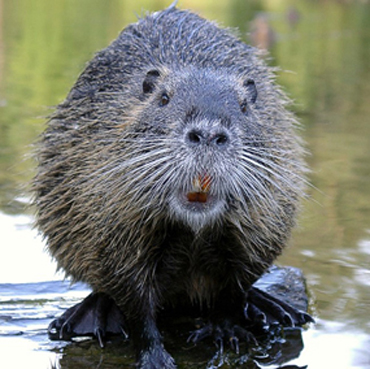Individually, nutria are pretty inoffensive little creatures. They look like scruffy beavers with skinny tails, and they can even be domesticated.
But get a bunch of them together and it’s another story. Nutria can destroy marshes and wetlands, stripping acre after acre of grasses that protect the coastline from erosion and provide habitat for shellfish, birds, and other creatures. In fact, they’ve been doing that in the United States for three-quarters of a century.
 Nutria look similar to beavers. Credit: National Park Service
Nutria look similar to beavers. Credit: National Park ServiceNutria are native to South America. They were brought to the United States in 1899 to establish a fur industry. In the 1930s, though, they began to be released into the wild.
But things got out of control. By the 1950s, Louisiana had about 20 million of the little critters, with other regions also seeing hefty populations. Nutria reproduce quickly, and they eat a quarter of their body weight every day, so the menace to wetlands grew.
Some states cut the populations by offering bounties for fur. When furs became less popular, though, the nutria began to bounce back. So instead, state and federal agencies have sponsored trapping programs. These efforts have produced good results. In Louisiana, for example, nutria damaged an estimated 100,000 acres of wetlands in 2000. By 2012, the number was down to just 4500 acres. And in Maryland, they’ve been all but eradicated from a major wildlife refuge.
Managers hope these efforts will allow wetlands to recover from the damage inflicted by these inoffensive but hungry creatures.

